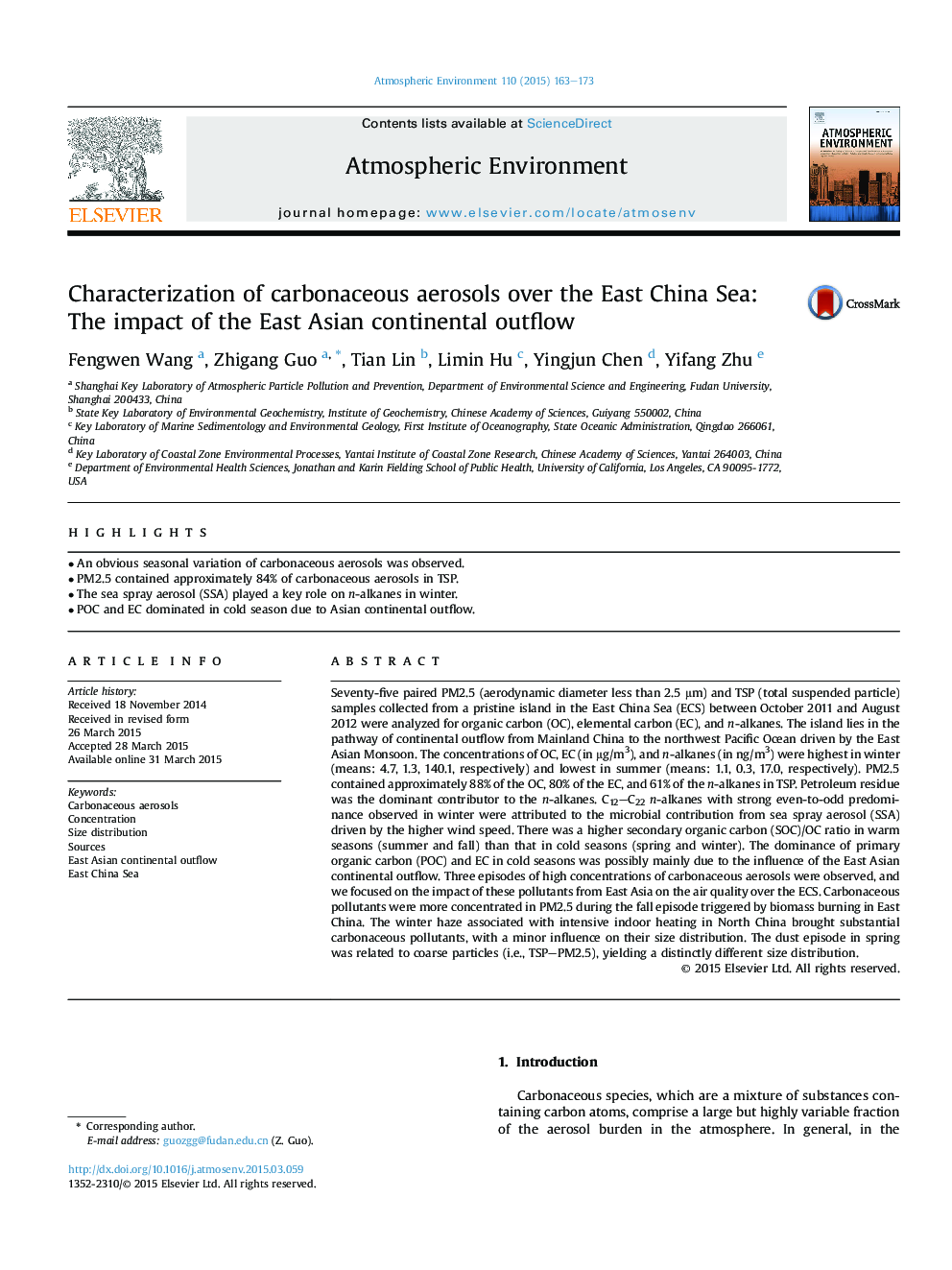| Article ID | Journal | Published Year | Pages | File Type |
|---|---|---|---|---|
| 6338185 | Atmospheric Environment | 2015 | 11 Pages |
â¢An obvious seasonal variation of carbonaceous aerosols was observed.â¢PM2.5 contained approximately 84% of carbonaceous aerosols in TSP.â¢The sea spray aerosol (SSA) played a key role on n-alkanes in winter.â¢POC and EC dominated in cold season due to Asian continental outflow.
Seventy-five paired PM2.5 (aerodynamic diameter less than 2.5 μm) and TSP (total suspended particle) samples collected from a pristine island in the East China Sea (ECS) between October 2011 and August 2012 were analyzed for organic carbon (OC), elemental carbon (EC), and n-alkanes. The island lies in the pathway of continental outflow from Mainland China to the northwest Pacific Ocean driven by the East Asian Monsoon. The concentrations of OC, EC (in μg/m3), and n-alkanes (in ng/m3) were highest in winter (means: 4.7, 1.3, 140.1, respectively) and lowest in summer (means: 1.1, 0.3, 17.0, respectively). PM2.5 contained approximately 88% of the OC, 80% of the EC, and 61% of the n-alkanes in TSP. Petroleum residue was the dominant contributor to the n-alkanes. C12-C22n-alkanes with strong even-to-odd predominance observed in winter were attributed to the microbial contribution from sea spray aerosol (SSA) driven by the higher wind speed. There was a higher secondary organic carbon (SOC)/OC ratio in warm seasons (summer and fall) than that in cold seasons (spring and winter). The dominance of primary organic carbon (POC) and EC in cold seasons was possibly mainly due to the influence of the East Asian continental outflow. Three episodes of high concentrations of carbonaceous aerosols were observed, and we focused on the impact of these pollutants from East Asia on the air quality over the ECS. Carbonaceous pollutants were more concentrated in PM2.5 during the fall episode triggered by biomass burning in East China. The winter haze associated with intensive indoor heating in North China brought substantial carbonaceous pollutants, with a minor influence on their size distribution. The dust episode in spring was related to coarse particles (i.e., TSP-PM2.5), yielding a distinctly different size distribution.
